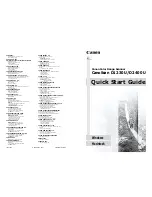
The following instructions are general in nature and are intended to provide guidance to safely install the SX on mobile
vehicles. It is not possible to give exact recommendations for all mobile applications; the designer/user must also comply with
the vehicle manufacturer’s recommendations and all applicable regulations and standards. See also the warning and the
basic installation guidelines.
Safety standards covering mobile vehicles or automated/automatic guided vehicles (AGV) include:
•
ISO 3691-4 — Industrial Trucks - Safety Requirements and verification - Part 4: Driverless industrial trucks and their
systems
•
ANSI/ITSDF (ASME) B56.5 — Safety Standard for Guided Industrial Vehicles
•
IEC 61496-3 — Requirements for Active Opto-Electronic Protective Devices Responsive to Diffuse Reflection
(AOPDDR)
The user must also regularly check the safeguarding function of the SX, and the speed and braking functions of the mobile
vehicle (see
on p. 64).
The user must instruct all individuals that may interact with the mobile vehicle (at a minimum) to:
•
not approach the vehicle directly or from the sides while moving
•
familiarize themselves with warning signals or lights/beacon
•
familiarize themselves with the size of the Warning and Safety Zones
3.9.1 Safety Zone Area - Length and Width
The horizontal Safety Zone will prevent a collision only if the edge of the field in the direction of movement is sufficiently
distant from the vehicle and its load. This dimension (length) of the Safety Zone is described as the Minimum Distance D.
The Side Distance Z (or the width of the Safety Zone) is used to ensure that the sides of the vehicle or a protruding load do
not create a hazard.
It is highly recommended that an oversized Warning Zone (in comparison to the Safety Zone) be used. The Warning Zone
and its associated output signal the approach of the mobile vehicle (e.g., by sounding a horn or illuminating lights/beacons),
and reduce the speed of the mobile vehicle. This can reduce the need or the amount of braking and wear on the drive
mechanisms.
The Safety Zone configuration must take into account trapping/crushing hazards that could be created by physical objects
near the path of the mobile vehicle. An example would be an elevated conveyor that the sensing field of the Side Distance Z
passes under, but does not provide enough clearance. This situation can occur if the distance between the end of the
conveyor and the side of the mobile vehicle is less than 500 mm (20 in) per ISO 13854 (EN349) Minimum Gaps to Avoid
Crushing.
The following items apply to the calculation for determining the Minimum Distance D (Safety Zone length):
•
Maximum speed of the AGV (Do not rely on the speed reduction initiated by the Warning Zone!)
•
The SX response time
•
The response time of the mobile vehicle drive logic, including the response time of any interfacing devices, such as
UM-FA-..A safety module (25 ms)
•
The braking distance of the AGV (including environmental conditions, such as wet or slippery flooring)
•
Absence or lack of clearance in front or to the sides of the AGV
•
The speed of movement of an individual
•
The reduced efficiency of the braking system, due to wear
WARNING:
•
Calculate the correct stop time
•
Failure to follow these instructions could result in serious injury or death.
•
The Stop Time (TS) must include the response time of all relevant devices or controls that react to
stop the mobile vehicle. If all devices are not included, the calculated Minimum Distance (D) will be
too short.
WARNING:
•
Maintain the proper separation distance
•
Failure to establish and maintain the Minimum Distance D could result in serious bodily injury or
death.
•
Locate the Safety Zone far enough from the nearest hazard such that an individual cannot reach
the hazard before cessation of hazardous motion or situation.
SX Safety Laser Scanner
www.bannerengineering.com - Tel: + 1 888 373 6767
39
















































